that's why I like my percs, you can literally tell how how the water is by how fast it perks, I can crank the heat way up with no concern about scorching the beans or cooking out the oils, then turn it down to a slow perk as soon as it starts and run it as long as I want for the flavour I want.Glen, I will throw my .02$ in
You have already done the hard part, finding a coffee you like. Now all you have to do is not wreck it when you travel.
Grinding fresh beans is the first step, but IMO if you keep everything sealed up, the grind is fine for up to 2 weeks (read this as saying you likely won't/can't tell)
Water is important, but you can't likely do much about local water , in the bush you have to filter/treat and traveling you could carry something like a Brita filter system ..... or just take the chance (me)
Then there is an item I didn't see mentioned here, you don't use boiling water, around 200 is considered the right range, so if you boil water, take it off the heat and let it sit for about a minute to get to about the right temp
As far as process, I would opt for either french press (me) or a drip setup ... both are reasonably inexpensive and portable .... but neither matter if you don't get that water temp right. Too low you get sour, light coffee and too high it gets bitter and over strong. If you opt for the french press start your extraction time at 4 minutes and adjust a bit to get it the way you like and lock that time in (whatever it is)
Brian
-
Happy Birthday, Marlene Dietrich (1901-1992)! 🔷😇🦵🏻
You are using an out of date browser. It may not display this or other websites correctly.
You should upgrade or use an alternative browser.
You should upgrade or use an alternative browser.
Coffee grinders and brewers for both home and camp?
- Thread starter Glenn MacGrady
- Start date
My long lasting love for dark beers, emphatically porter, has waned in recent years, to the point where another dark brew commands my attention.
That dark roast bean. While tea is a nice break from the world, coffee is an engagement with it.

 en.wikipedia.org
en.wikipedia.org
Here is my kitchen coffee landscape every morning. Kicking Horse Beans. Cheapo grinder. Bialetti mocha pot. Saucier and a wand frother.
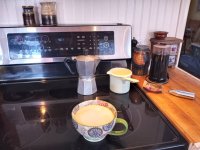
My own cappuccino country.
In camp we've tried various ways to make coffee. Lately it's been either an old percolator or a large Bialetti. Makes enough for several cups of plain old bold flavoured coffee, especially if you like to add a splash of something more.
That dark roast bean. While tea is a nice break from the world, coffee is an engagement with it.

Porter (beer) - Wikipedia
Here is my kitchen coffee landscape every morning. Kicking Horse Beans. Cheapo grinder. Bialetti mocha pot. Saucier and a wand frother.

My own cappuccino country.
In camp we've tried various ways to make coffee. Lately it's been either an old percolator or a large Bialetti. Makes enough for several cups of plain old bold flavoured coffee, especially if you like to add a splash of something more.
Last edited:
- Joined
- Jan 7, 2016
- Messages
- 960
- Reaction score
- 1,879
Oldie …….
I make coffee for my wife like that, it is even good enough that I like it too. Kinda fun making it, like a Japanese tea ritual, only with an Italian twist.
I make coffee for my wife like that, it is even good enough that I like it too. Kinda fun making it, like a Japanese tea ritual, only with an Italian twist.
I like the simplicity of use and ease of clean up of a collapsible pour over cone with standard paper filter. GSI JavaDrip is what I use. I rarely bother to grind my coffee at home and never both in camp. I just bring ground coffee in zip loc.
pour over
cheap plastic pour over
a plastic cone with a disposable paper filter
paper filters a la Aeropress and pour-overs
a collapsible pour over cone with standard paper filter
I'm initially attracted to the simplicity, low cost and light weight of the pour over method, but there's something I don't quite get. Other methods involve perking or steeping the grounds in the hot water for several minutes. How can enough coffee get dissolved into the water during a simple pour over?
Pour over uses fine grind, the soaking methods use the coarser grinds
- Joined
- Jan 7, 2016
- Messages
- 960
- Reaction score
- 1,879
Pour over coffee grounds get some soak time, the paper filter slows the flow, somewhat.
Glenn, there's really zero difference between (1) these collapsible cones, (2) the cone a barista uses doing a manual pour over at the local hipster coffee shop, and (3) the cone inside the automatic drip coffee maker (Mr. Coffee, Braun, etc.) sitting on your counter. In fact my GSI collapsible coffee cone uses the exact same make and size standard Melitta filter that fits my Braun automatic drip coffee maker (convenient to only need one size).
Put a given volume of the same grounds that have been ground to the same level of coarseness/fineness in the same shaped/volume cone with the same filter and add the same volume of water. The water will only flow through the grounds at a particular speed and will do so without the slightest regard for whether the water is being pretentiously poured by the barista, sprayed over the grounds (out of view) by your automatic drip coffee maker, or poured by you over your collapsible camping cone as you scratch your hiney and try to wake up. Even if you try to pour fast, you'll find the water just pools and will threaten to overflow the cone; you just have to wait for the water to slowly drip through. Darn, I want some coffee now!
Put a given volume of the same grounds that have been ground to the same level of coarseness/fineness in the same shaped/volume cone with the same filter and add the same volume of water. The water will only flow through the grounds at a particular speed and will do so without the slightest regard for whether the water is being pretentiously poured by the barista, sprayed over the grounds (out of view) by your automatic drip coffee maker, or poured by you over your collapsible camping cone as you scratch your hiney and try to wake up. Even if you try to pour fast, you'll find the water just pools and will threaten to overflow the cone; you just have to wait for the water to slowly drip through. Darn, I want some coffee now!
The water will only flow through the grounds at a particular speed
Even if you try to pour fast, you'll find the water just pools and will threaten to overflow the cone; you just have to wait for the water to slowly drip through.
I can visualize that I can't make the water go faster through the grounds, and that it'll just pool up if I pour too fast, but I can also visualize pouring very slowly. Wouldn't a slow pour make stronger coffee? In addition, you say you put a paper filter inside the GSI mesh filter. Doesn't that slow the drip rate, hence increase the steep time, and hence make stronger coffee than just using the mesh filter? Newbie questions, I know, but I've only been in the presence of barristers and never baristas.
My GSI JavaDrip isn't mesh. It's a silicone cone.I can visualize that I can't make the water go faster through the grounds, and that it'll just pool up if I pour too fast, but I can also visualize pouring very slowly. Wouldn't a slow pour make stronger coffee? In addition, you say you put a paper filter inside the GSI mesh filter. Doesn't that slow the drip rate, hence increase the steep time, and hence make stronger coffee than just using the mesh filter? Newbie questions, I know, but I've only been in the presence of barristers and never baristas.

JavaDrip Collapsible Pour Over Coffee Maker, Blue | GSI Outdoors
The GSI Outdoors collapsible silicone Java Drip uses any brand of #4 filter for easy, fresh brewed coffee in your camp kitchen.
 gsioutdoors.com
gsioutdoors.com
A cone isn't a closed system where you can adjust how long the water is in contact with the grounds to extract more water soluble coffee goodness. Once the grounds/paper filter are saturated, water added at the top of the cone passes through the cone and the grounds at a rate determined by the quantity and density of the grounds, gravity and the size of the hole in the bottom of the cone. How much water is being added to the system per unit of time (ml/sec) has nothing to do with it. That's why a fast pour doesn't change the speed with which water comes out of the bottom of the system; it just pools the water in the cone until it has time to work its way through. Adding less water doesn't reduce the speed the water can travel through the system, either; it simply passes through the system in the same amount of time as a higher volume of but without the need to pool.
Strength of coffee coming out of a drip coffee system (which is all a pour over is) thus is a function of how much total water is passed over a particular volume of grounds and not the volume of water per second added to the system. When you want strong coffee in such a system you either add more grounds for the same quantity of water or you add less water to the same quantity of grounds. You don't increase/decrease the volume per second of water added to the top of the system because it won't accomplish anything.
Wouldn't it be great if on the last day of a trip when you have only 1 teaspoon of grounds left you could make enough coffee for 12 people simply by very, very slowly pouring a gallon of water over that 1 teaspoon of coffee grounds? But it doesn't work that way. You will end up with weak coffee no matter how slowly you pour that gallon of water over 1 teaspoon of coffee grounds.
Brewing tea in a cup using a tea bag or brewing cowboy coffee in a pot is different. Those are closed systems where the water has no place to go. You can change the strength of the beverage by varying the amount of time a given volume of water and given amount of tea leaves steep in the cup (or water and coffee grounds boil in the pot) Brewing only stops when you remove the bag, pour the coffee or when all the water soluble stuff is in solution. But since there's still only so much water soluble stuff in a given volume of tea leaves/coffee grounds, don't expect to get strong tea coffee with a gallon of water and 1 teaspoon of tea/coffee no matter how long you steep/boil it. Loaves and fishes this is not.
EDIT: Found this Smithsonian magazine article that talks about the difference between flow through methods (drip/pour over) and immersion methods. Note that the article says the flow through rate is a function of grind size only.
"Pour-overs and other flow-through systems are more complex. Unlike full immersion methods where time is controlled, flow-through brew times depend on the grind size since the grounds control the flow rate."
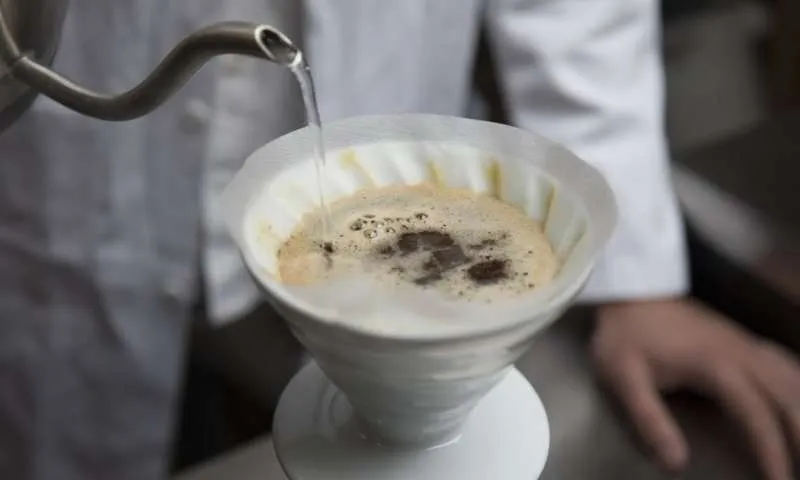
The Chemistry and Physics Behind the Perfect Cup of Coffee
How science helps your barista brew your espresso perfectly every time
Last edited:
Along with the Aeropress sometimes I also will use the GSI collapsible silicone cone filter and #4 paper filters. I think the Aeropress makes a better brew, but like the paper cone filter approach because it allows me to brew 2 mugs of coffee at the same time.
When using a #4 cone filter, I use a 24oz wide mouth stainless steel thermos and place the drip cone on top. Place enough coffee in the filter for 2 mugs of coffee and start the drip process. When finished I’ll have 2 mugs of coffee, the first is consumed immediately and the second will be hot and ready for quite a while. The night before I will boil water and store it in the Thermos. In the morning the Thermos water will come to a boil very quickly and the brewed coffee has a preheated Thermos to reside in. When canoe tripping I’ll frequently save the second cup of coffee to drink after the canoe is loaded and I launch for the days paddle.
When using a #4 cone filter, I use a 24oz wide mouth stainless steel thermos and place the drip cone on top. Place enough coffee in the filter for 2 mugs of coffee and start the drip process. When finished I’ll have 2 mugs of coffee, the first is consumed immediately and the second will be hot and ready for quite a while. The night before I will boil water and store it in the Thermos. In the morning the Thermos water will come to a boil very quickly and the brewed coffee has a preheated Thermos to reside in. When canoe tripping I’ll frequently save the second cup of coffee to drink after the canoe is loaded and I launch for the days paddle.
On calm seas and light winds I find the second cup of coffee in the canoe a nice start to the paddling day. I crafted a holder for the coffee mug I use. An oak base with glued on gripper pad keeps it in place on the hull floor. Later in the day when the coffe mug is stowed away it becomes a nice holder for grapes, oranges or other foodstuffs.When canoe tripping I’ll frequently save the second cup of coffee to drink after the canoe is loaded and I launch for the days paddle.

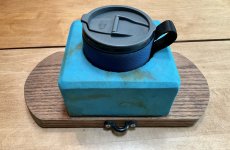
I once carried my coffee in one hand while carrying my OT Tripper over a .9 mile portage.
My GSI JavaDrip isn't mesh. It's a silicone cone.

JavaDrip Collapsible Pour Over Coffee Maker, Blue | GSI Outdoors
The GSI Outdoors collapsible silicone Java Drip uses any brand of #4 filter for easy, fresh brewed coffee in your camp kitchen.gsioutdoors.com
My mistake. I was looking at the GSI Ultralight Java Drip, which has a mesh filter:
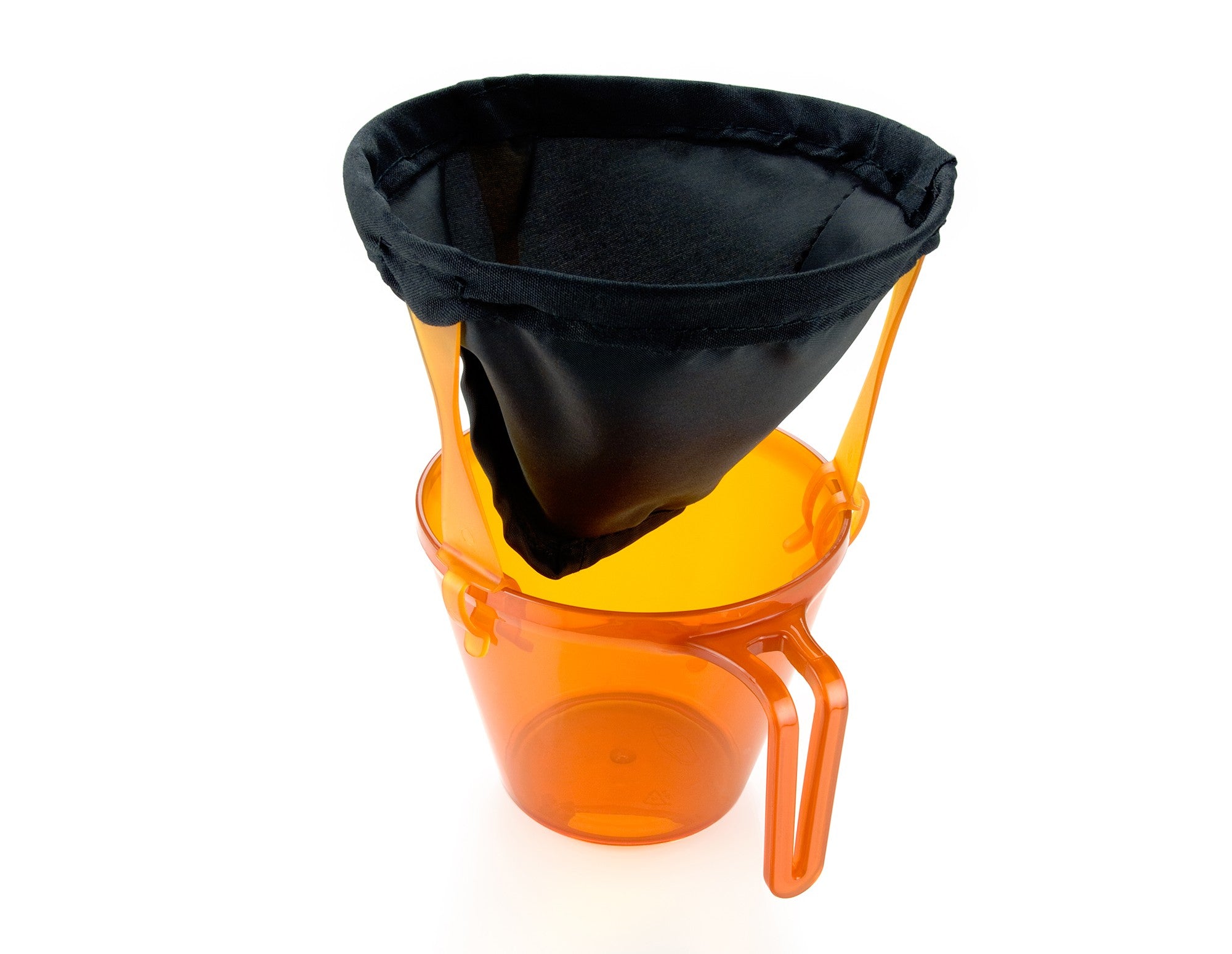
GSI Outdoors Ultralight Java Drip
The GSI Outdoors Ultralight Java Drip means that the most minimalist hikers, travelers, and backpackers can enjoy real coffee every day. The ultra-compact design packs well. There’s just no excuse not to have good trail coffee anymore.
 gsioutdoors.com
gsioutdoors.com
water added at the top of the cone passes through the cone and the grounds at a rate determined by the quantity and density of the grounds, gravity and the size of the hole in the bottom of the cone.
I would also include filter hole size. This is why some articles and videos advocate putting paper filters into the mesh filter on the GSI Ultralight. The additional filtration barrier slows the flow rate, increases the steep time, and makes stronger coffee from the same amount of grounds. That's how I understand it, at least.
How much water is being added to the system per unit of time (ml/sec) has nothing to do with it. That's why a fast pour doesn't change the speed with which water comes out of the bottom of the system; it just pools the water in the cone until it has time to work its way through. Adding less water doesn't reduce the speed the water can travel through the system, either; it simply passes through the system in the same amount of time as a higher volume of but without the need to pool.
Maybe this is true in practical effect since the filter cone is such a small system. But it makes physics sense to me that a lone water drop will move more slowly through the grounds and filter than that same drop over-topped by a hundred other drops pooled above it and hence applying greater gravitational pressure upon it. On the other hand, pooled water in the cone will likely compress the grounds into a greater density than a slow pour.
All articles I've read seem to advocate a relatively slow pour for best solute extraction (strength and flavor), and some advocate a "pulsed" slow pour to agitate the density of the grounds. I'll just link two:
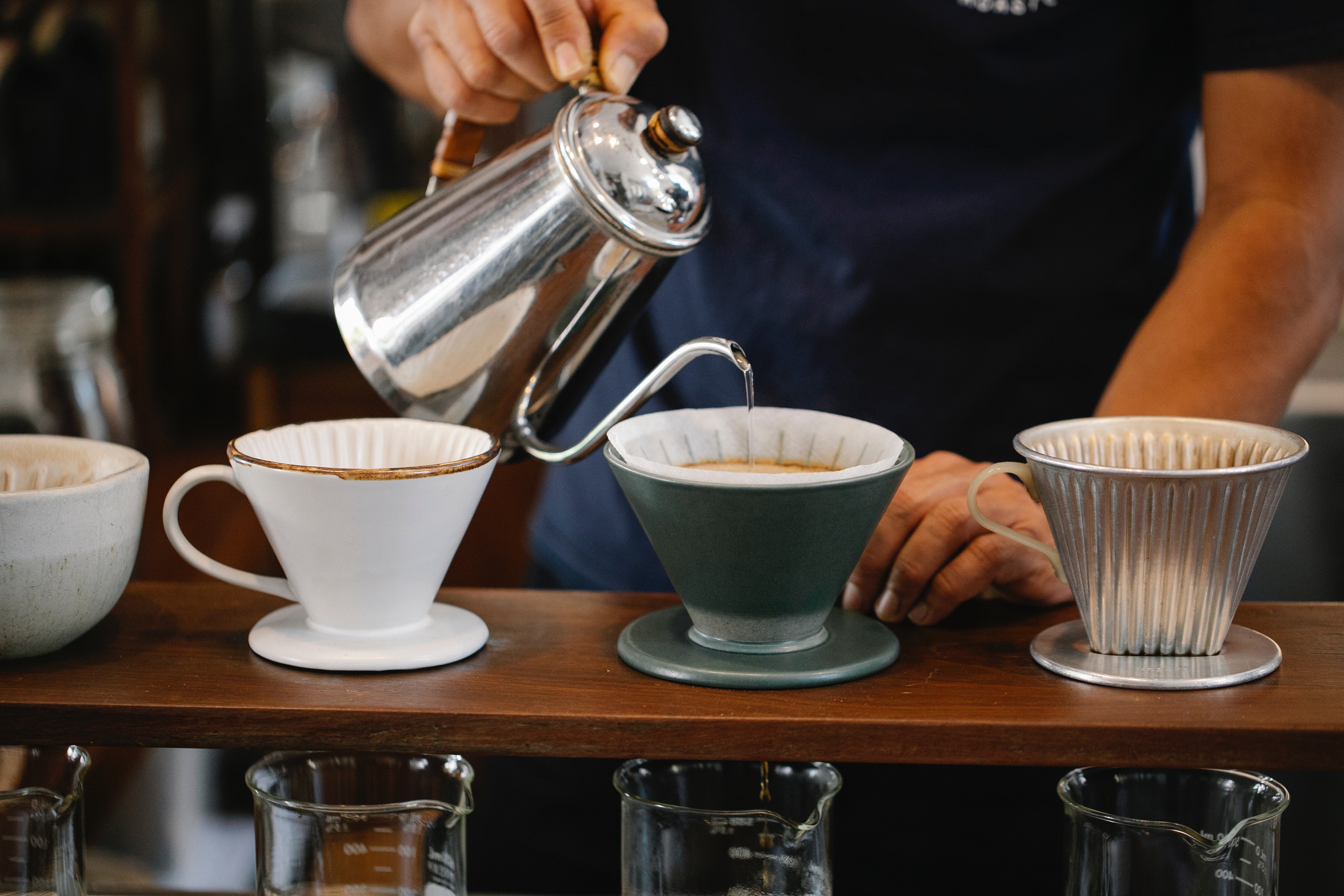
Why Is Slow Pour Important? | Pour-Over Coffee Makers
The slow pour may be an overlooked step in the coffee brewing process, but it is essential for achieving a great cup of pour-over coffee. Discover how this part of making coffee helps you achieve that perfect cup and why it matters so much.
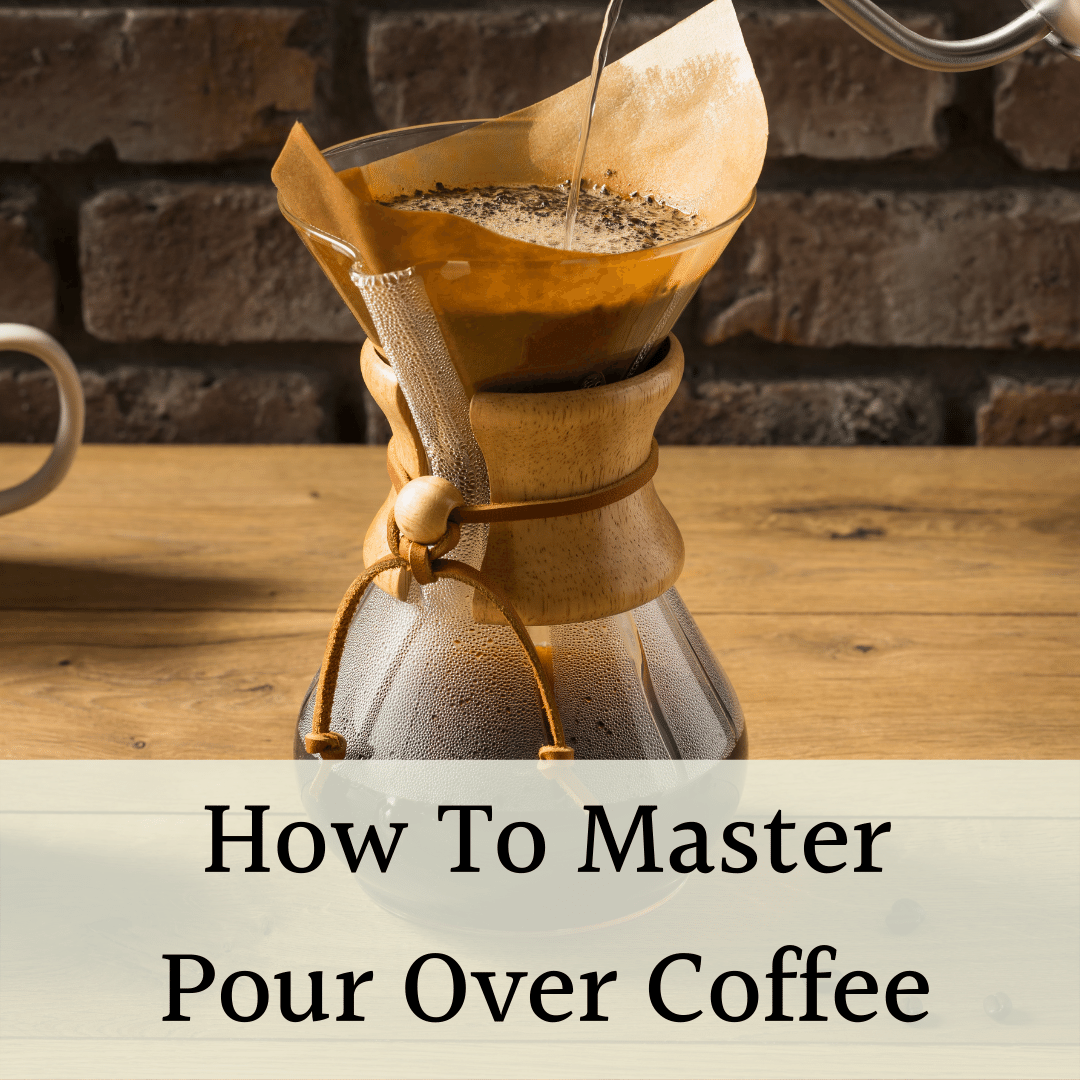
Become A Pour Over Coffee Master: The Ultimate Guide
Pour over coffee brings out the most vibrant flavors from coffee. Pour over coffee brewing is easy to learn with this guide.
All in all, this seems very multifactorial and fiddly to get consistent results. I'm sure with sufficient practice I could get a consistently satisfactory brew. But there's only so much time and patience in life to practice everything. I'm not convinced coffee is an important enough thing, but I appreciate all the advice and experience. I'll likely experiment with low expectations of myself.
Full disclosure, I've thought pour over is nothing but a fad designed to separate hipsters form their money since the first time I walked into a coffee shop to get a cup of joe and saw a sign with specific prices for small, medium and large coffees when dispensed from the urn but another sign announcing I could purchase a pour over coffee "at market rate" -- like I was ordering a freaking lobster dinner at Legal Seafood. I burst out laughing.But it makes physics sense to me that a lone water drop will move more slowly through the grounds and filter than that same drop over-topped by a hundred other drops pooled above it and hence applying greater gravitational pressure upon it. On the other hand, pooled water in the cone will likely compress the grounds into a greater density than a slow pour.
All articles I've read seem to advocate a relatively slow pour for best solute extraction (strength and flavor), and some advocate a "pulsed" slow pour to agitate the density of the grounds.
In the years since I've tried to figure out if there is a real advantage worth paying for. Claims that you can change the taste of the coffee by slowing or speeding the pour are all over the internet. But also completely unsupported. Not one of those claims I have been able to find has the slightest reference to physical science. And they are written by baristas and others hawking pour over coffee and pour over coffee equipment. I'd wager these people are not chemists or physicists.
The Smithsonian article, however, was written by an actual Assistant Professor of Computational Materials and Chemistry. If he says the flow through rate of pour over and other flow through (drip) systems is controlled by grind size (not speed of pour), I tend to believe him over Joe Barista Pour Over who thinks the laws of physics are suspended by his magical, gradual pouring technique. Could hydrostatic head in something as small as a coffee cone do something very slight to move the water column through the grounds/filter paper faster? Maybe. But color me skeptical. As the Smithsonian article points out, it's about freshness of the coffee, grind (which controls brew time in flow through systems), water ph and almost above all else water temperature. Since you are generally stuck with the ph of the water available in your house, about the only one of those factors that cannot be controlled in your average home auto drip coffee maker as well as it can be controlled by Joe Barista Pour Over is water temperature.
Some enjoy the ritual of controlling these factors. I really don't. It's just coffee. Give me a bag of Dunkin' original blend, ground coffee and an auto drip maker and I'm in heaven. (Need I say I'm originally from Boston).
Last edited:
Like to see that I am not the only one who overthinks the utterly mundane.
I used to get a lot of laughs as I walked along with my boat on my shoulders and a "dingle string" (a loose line tied from bow to stern used to steer the canoe while portaging) in one hand and my beverage of choice in the other...I once carried my coffee in one hand while carrying my OT Tripper over a .9 mile portage.
At home I tend to alternate between pour over using a Melita rigid plastic cone or using an MSR Mugmate, both using regular packaged ground coffee. The mugmate is convenient when I don't want to take time to patiently pour a little water at a time but results in sludge at the bottom of the mug. With the cone and paper filter I think eliminating air pockets and getting the grounds thoroughly wet initially, what seems to be referred to as letting the coffee grounds bloom, is important for best extraction. Also, initially a bunch of the grounds tend to float up and then get deposited up the sides of the cone so as I pour I make an effort to keep rinsing grounds down from the sides so that water is getting contact with as much of the grounds as possible. This requires slow pouring with pauses to let the water drain through so it requires patience.
For camping the GSI collapsible cone is nice, but looking for something smaller to use for an individual cup of coffee I ordered this UST collapsible drip cone that works with #2 cone filters: UST collapsible coffee drip cone
It has two holes at the bottom of the cone rather than the one hole on the Melita cone so at first I was worried that the water would run through too fast and make weak coffee. Since some cones designed to support paper filters are wire framework or coarse mesh I guess the number of holes at the bottom of a solid cone shouldn't be an issue. What seems to limit the flow rate with the already ground coffee I use is the paper filter getting plugged up with the fine particles that form the sludge in a non-filtered system, more than the flow through the bulk of the grounds or the hole(s) at the bottom of the cone support. Do the home burr grinders that people recommend reduce the amount of these fine "sludge forming" particles? On a chilly morning in camp the mugmate has an advantage of allowing the brewing to take place in an insulated mug. Doing pour over it seems the water might cool too much during the slow process.
For camping the GSI collapsible cone is nice, but looking for something smaller to use for an individual cup of coffee I ordered this UST collapsible drip cone that works with #2 cone filters: UST collapsible coffee drip cone
It has two holes at the bottom of the cone rather than the one hole on the Melita cone so at first I was worried that the water would run through too fast and make weak coffee. Since some cones designed to support paper filters are wire framework or coarse mesh I guess the number of holes at the bottom of a solid cone shouldn't be an issue. What seems to limit the flow rate with the already ground coffee I use is the paper filter getting plugged up with the fine particles that form the sludge in a non-filtered system, more than the flow through the bulk of the grounds or the hole(s) at the bottom of the cone support. Do the home burr grinders that people recommend reduce the amount of these fine "sludge forming" particles? On a chilly morning in camp the mugmate has an advantage of allowing the brewing to take place in an insulated mug. Doing pour over it seems the water might cool too much during the slow process.
I just started taking my cowboy coffee off the burner before it comes to a boil, instead of after. It does seem to have more/better flavor and it has foam on top in my cup, which I like.
I like that term! I love my dingle string..But I have never had the nerve to carry a cuppa in the other hand.. Quickie Q. How do you mount and dismount the canoe with a cup of coffee?I used to get a lot of laughs as I walked along with my boat on my shoulders and a "dingle string" (a loose line tied from bow to stern used to steer the canoe while portaging) in one hand and my beverage of choice in the other...
Similar threads
- Replies
- 4
- Views
- 939
- Replies
- 22
- Views
- 2K
